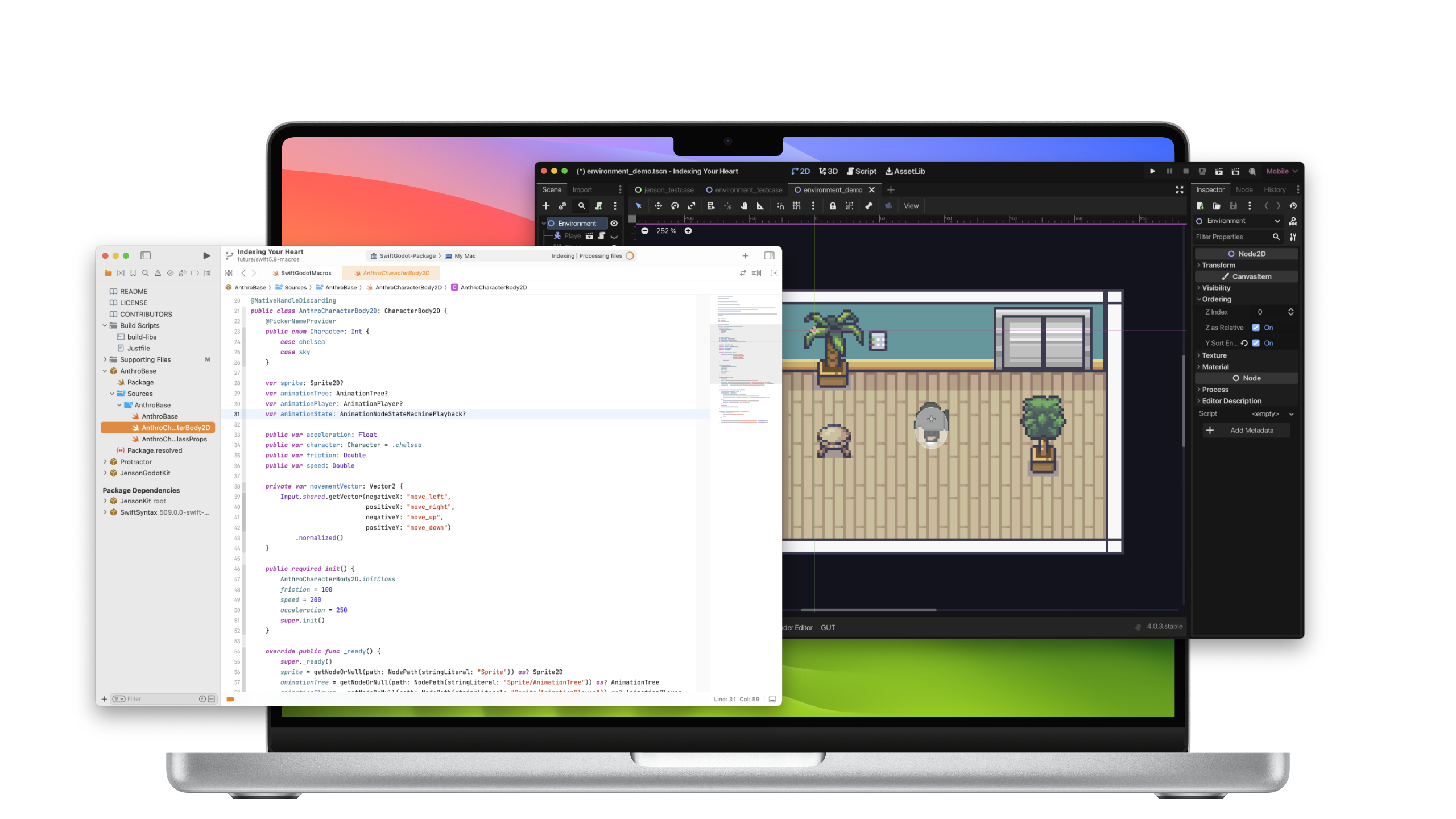Embeddable Game Engine
 Many years ago, when working at Xamarin, where we were building cross-platform
libraries for mobile developers, we wanted to offer both 2D and 3D gaming
capabilities for our users in the form of adding 2D or 3D content to their
mobile applications.
Many years ago, when working at Xamarin, where we were building cross-platform
libraries for mobile developers, we wanted to offer both 2D and 3D gaming
capabilities for our users in the form of adding 2D or 3D content to their
mobile applications.
For 2D, we contributed and developed assorted Cocos2D-inspired libraries.
For 3D, the situation was more complex. We funded a few over the years, and we contributed to others over the years, but nothing panned out (the history of this is worth a dedicated post).
Around 2013, we looked around, and there were two contenders at the time, one was an embeddable engine with many cute features but not great UI support called Urho, and the other one was a Godot, which had a great IDE, but did not support being embedded.
I reached out to Juan at the time to discuss whether Godot could be turned into such engine. While I tend to take copious notes of all my meetings, those notes sadly were gone as part of the Microsoft acquisition, but from what I can remember Juan told me, "Godot is not what you are looking for" in two dimensions, there were no immediate plans to turn it into an embeddable library, and it was not as advanced as Urho, so he recommended that I go with Urho.
We invested heavily in binding Urho and created UrhoSharp that would go into becoming a great 3D library for our C# users and worked not only on every desktop and mobile platform, but we did a ton of work to make it great for AR and VR headsets. Sadly, Microsoft's management left UrhoSharp to die.
Then, the maintainer of Urho stepped down, and Godot became one of the most popular open-source projects in the world.
Last year, @Faolan-Rad contributed a patch to Godot to turn it into a library that could be embedded into applications. I used this library to build SwiftGodotKit and have been very happy with it ever since - allowing people to embed Godot content into their application.
However, the patch had severe limitations; it could only ever run one Godot game as an embedded system and could not do much more. The folks at Smirk Software wanted to take this further. They wanted to host independent Godot scenes in their app and have more control over those so they could sprinkle Godot content at their heart's content on their mobile app (demo)
They funded some initial work to do this and hired Gergely Kis's company to do this work.
Gergely demoed this work at GodotCon last year. I came back very excited from GodotCon and I decided to turn my prototype Godot on iPad into a complete product.
One of the features that I needed was the ability to embed chunks of Godot in discrete components in my iPad UI, so we worked with Gergely to productize and polish this patch for general consumption.
Now, there is a complete patch under review to allow people to embed arbitrary
Godot scenes into their apps. For SwiftUI users, this means that you can embed a Godot scene into a View and display and control it at will.
Hopefully, the team will accept this change into Godot, and once this is done, I will update SwiftGodotKit to get these new capabilities to Swift users (bindings for other platforms and languages are left as an exercise to the reader).
It only took a decade after talking to Juan, but I am back firmly in Godot land.
Posted on 23 Apr 2024
Blog Search
Archive
- 2024
Apr Jun - 2020
Mar Aug Sep - 2018
Jan Feb Apr May Dec - 2016
Jan Feb Jul Sep - 2014
Jan Apr May Jul Aug Sep Oct Nov Dec - 2012
Feb Mar Apr Aug Sep Oct Nov - 2010
Jan Feb Mar Apr May Jun Jul Aug Sep Oct Nov Dec - 2008
Jan Feb Mar Apr May Jun Jul Aug Sep Oct Nov Dec - 2006
Jan Feb Mar Apr May Jun Jul Aug Sep Oct Nov Dec - 2004
Jan Feb Mar Apr May Jun Jul Aug Sep Oct Nov Dec - 2002
Jan Feb Mar Apr May Jun Jul Aug Sep Oct Dec
- 2022
Apr - 2019
Mar Apr - 2017
Jan Nov Dec - 2015
Jan Jul Aug Sep Oct Dec - 2013
Feb Mar Apr Jun Aug Oct - 2011
Jan Feb Mar Apr May Jun Jul Aug Sep Oct Nov Dec - 2009
Jan Feb Mar Apr May Jun Jul Aug Sep Oct Nov Dec - 2007
Jan Feb Mar Apr May Jun Jul Aug Sep Oct Nov Dec - 2005
Jan Feb Mar Apr May Jun Jul Aug Sep Oct Nov Dec - 2003
Jan Feb Mar Apr Jun Jul Aug Sep Oct Nov Dec - 2001
Apr May Jun Jul Aug Sep Oct Nov Dec